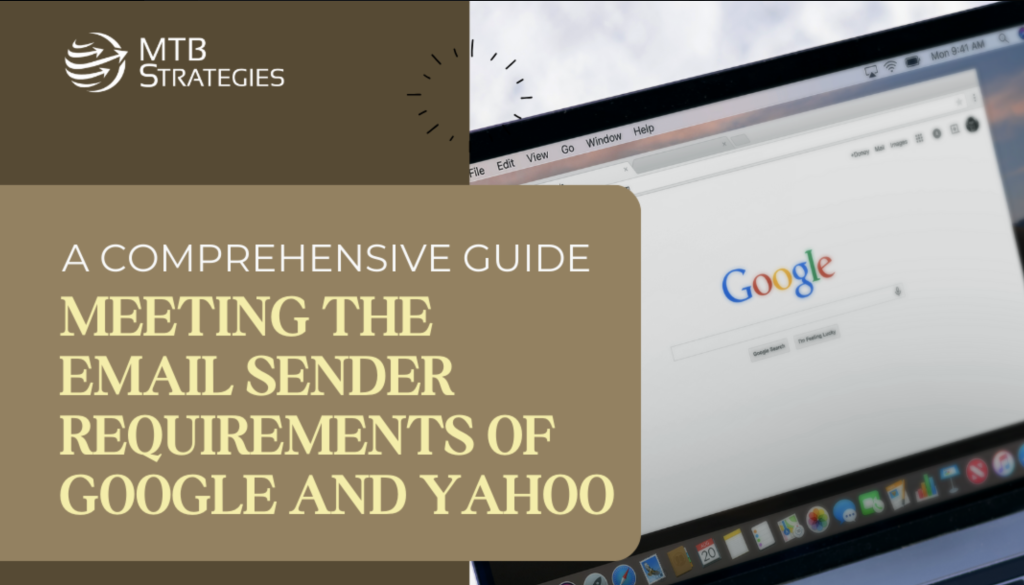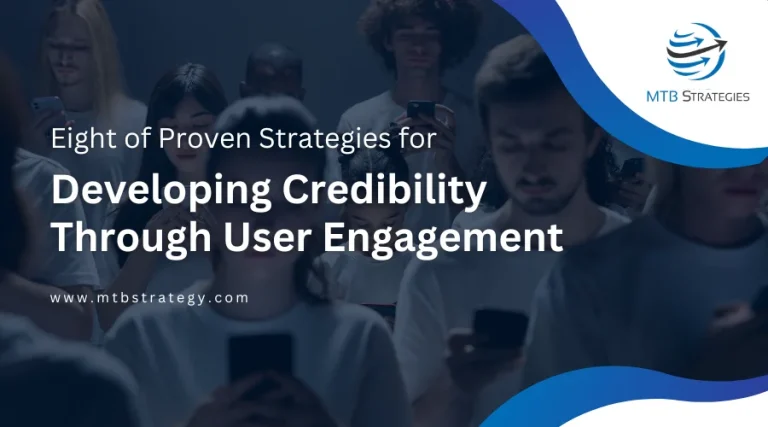Chances are, you’re already familiar with the latest sender requirements introduced by Google and Yahoo.
And while these new sender requirements might be causing a bit of stress, take a deep breath—there’s good news.
Firstly, there’s no need to hurry. You can continue concentrating on BFCM without any disruption, as these changes will come into effect in Q1 of 2024. In fact, we advise against taking any action until after the holiday shopping season is done.
Secondly, these requirements are not only beneficial for your customers but also enhance your deliverability score and it’s likely that you’re likely already complying with most of them.
According to Eileen Costello, Director of Operations at MTB Strategies Digital Marketing, there is a lot to be said about these new requirements:
“Inbox providers have been talking about these best practices for a long time now and by making them a requirement instead of a suggestion, the heavy hitters in email providers are reiterating the importance of configuring your email marketing more securely.”
She also adds, “Following these new requirements will make it possible for email providers to recognize your email campaigns as legit and make it easier and more effective to connect with your communities. So while it may feel like you have some technical challenges to overcome, it’s a win-win in the end. And what’s even better is that since Google’s requirements are tighter than Yahoo’s once you have ticked off all of the Google tasks, you’re good to go for Yahoo too.”
Who should consider making adjustments? Everyone, with a special focus on bulk email campaigns. Google’s requirements apply to everyone but with additional requirements for organizations sending out more than 5,000 emails per day.
If a business doesn’t know whether or not they are in view of the 5,000-email threshold, consider the following guidelines:
- Google encompasses personal accounts with email addresses ending in @gmail.com
- All traffic from a specific sender contributes to the 5,000-email threshold, including transactional emails.
You might be closer to the 5,000-email threshold—and thus classified as a bulk sender—than you realize.
Let’s look at the changes now and see how businesses can be sure they are prepared for them.
Three significant new requirements to anticipate
To qualify as a bulk sender, you must meet three primary requirements:
1. Implement DMARC authentication for your sending domain. This new requirement is a proactive measure to address (though it’s advisable to tackle it after Black Friday/Cyber Monday is behind you).
You can personally establish DMARC authentication for your sending domain through your DNS provider at any convenient time. Your DMARC enforcement policy can initially be set to ‘none,’ and Google provides specific guidelines to enhance your brand’s success.
2. Ensure alignment of your “From:” header with your domain As a bulk sender, having your own dedicated sending domain is now a requirement; shared domains are no longer permitted. Additionally, the domain specified in your friendly “From:” header (visible to your subscribers in their inbox) must align with your sending domain to comply with DMARC alignment.
If your account utilizes an [email protected] “From” address, it is already aligned with a dedicated sending domain like send.domain.com. This means there is no need to update your “From:” address to something like [email protected].
This applies to both marketing and transactional emails.
Note: While shared domains are no longer allowed, there is no requirement for a dedicated IP—using a shared one is still acceptable.
3. Simplify and Clarify the Unsubscribe Process This requirement comprises two aspects:
- Your marketing emails have to feature a one-step unsubscribe method.
- The message body must contain an unsubscribe link, although it does not necessarily have to enable one-click unsubscribing.
Eileen adds, “If the unsubscribe process isn’t easy for people to coplete, there’s a bigger chance those emails will end up in a spam folder and have a negative effect on your deliverability metrics.”
A prominently displayed unsubscribe link and a streamlined process for opting out of marketing messages are considered best practices. Achieving compliance on this aspect is expected to enhance your deliverability score, sender reputation, and customer engagement once implemented.
Requirements for all senders
If you send emails to Google accounts, even if you don’t consistently reach the threshold of 5,000 messages per day, you must adhere to new requirements.
Maintain low spam rates. While you likely already strive to minimize spam complaints to prevent emails from landing in spam folders, you are now required to keep them below 0.30%. Google’s Postmaster Tools can be utilized to monitor your spam complaint rates.
Avoid manipulating Gmail “From:” headers. This may specifically affect entrepreneurs in the early stages of their business. If you currently use gmail.com or googlemail.com in the friendly “From:” address without having your own domain, your emails might be classified as spam.
Considering this, it’s advisable to acquire your own domain before February 1, 2024.
Eileen sees this obligation in a wholly positive light, stating, “In the end, this presents a fantastic opportunity to enhance your brand’s reputation with inbox providers and establish recognition with your customers.
Are there additional requirements to consider? Yep, there are more. These include:
- Configuring SPF and DKIM email authentication for your domain.
- Confirm that your sending domain and IP possess valid forward and reverse DNS records.
- Formatting messages in accordance with the Internet Messaging Format standard.
Who will feel the effects of these new requirements?
This will particularly affect bulk senders, particularly brands that send over 5,000 emails daily. Please meet these new requirements to avoid delivery problems for emails sent to Google and Yahoo addresses.
Here’s a checklist outlining the necessary steps to ensure compliance with the new sender requirements set by both Google and Yahoo.
Remove Gmail from your friendly “from” address
Applicable to all senders, not just bulk senders.
Avoid using Gmail or Yahoo email addresses in your friendly “from” address. If your emails currently feature @gmail.com or @yahoo in the “from” address, transition it to a website domain that you own.
To adhere to this requirement, secure an email address with your own site’s domain name. If you’re a budding brand without your own domain yet, it’s advisable to invest in one before February 1, 2024. You can acquire your domain from any domain registrar.
Having your own website domain is crucial for completing the remaining steps in this checklist.
Establish a Sending Domain with Your Brand
Establishing a branded sending domain, also referred to as a dedicated sending domain, provides enhanced control over your sender reputation. Branded sending domains are a recommended best practice for improved deliverability and have become a requirement for bulk senders regularly emailing Google and Yahoo recipients starting in February.
It’s important to note that after enabling your branded sending domain, a gradual warming of your sending infrastructure may be necessary over the next 2 to 4 weeks.
Set up DMARC authentication with p=none
DMARC authentication serves as a protocol policy employed by servers to verify the legitimacy of email sources. Organizations utilize DMARC policies to safeguard their sender email address domains, preventing unauthorized use by malicious entities.
Configuration is typically done through your DNS provider to implement DMARC authentication. It is advised to set up your DMARC policy with a minimum setting of p=none on your root domain, with specific guidelines provided by Google.
Consider exploring third-party tools that facilitate the updating and management of your DMARC policy, such as:
- DMARCian
- VailMail
- EasyDMARC
Create a straightforward unsubscribe process.
One of the recent sender mandates necessitates the inclusion of a one-click unsubscribe link in every email.
Your sole task is to review all your campaign templates and flow emails before February, ensuring the presence of an unsubscribe link within the email body (commonly located in the footer). While the unsubscribe link doesn’t necessarily have to be one-click, it should be evident and easily accessible.
Minimize the number of spam complaints.
This requirement applies universally and has consistently been a recommended approach for marketers. Maintaining a low level of spam complaints is crucial for demonstrating to inbox providers that you are a legitimate sender adhering to best deliverability practices.
FAQs on the Latest Sender Requirements
Explore these commonly asked questions (along with their answers) regarding the new sender requirements from Google and Yahoo.
- At what time will the enforcement of the new requirements take place?
Google has announced the initiation of enforcement for the new requirements beginning on February 1, 2024. Meanwhile, Yahoo has not provided specifics beyond the first quarter of 2024.
- At what point should my team commence implementing these changes?
We suggest prioritizing activities after Black Friday and Cyber Monday (BFCM) and then initiating these changes in early January.
- Who will these changes impact?
These changes bring benefits to all parties involved: your subscribers will experience a more organized and less spam-filled inbox, your deliverability score is expected to improve, and adhering to these requirements ensures you maintain best practices in email marketing.
Also read this awesome article Unlocking the Power of Email Marketing: A Comprehensive Introduction






